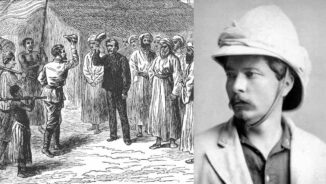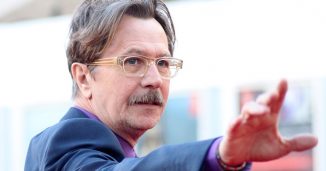180 years ago today, the Bab began teaching the Baháʼí faith, marking forever both the Holy Day and Day 1, or New Year’s Day on the faith’s calendar. It is the most important day for Baháʼí followers. The new year follows the Vernal Equinox as determined by when it occurs in Tehran, where Bab and his successor Baháʼu’lláh were born. While it may be tempting to dismiss other calendars as completely frivolous, by identifying the closest approximation of the square root of the Earth’s rotation around the Sun (19) and dividing the year into 19 months with 19 days each, Baháʼís “have managed to establish the most symmetrical relationship possible between the week and the year,” which just happens to have never occurred in the history of societal organization before. READ more about this topic… (1840)

Sociologist Eviatar Zerubavel wrote in his book The Seven Day Circle, that in their calendar, Baháʼís created something totally unique in human institutions, and that by marking 19-day cycles as weeks, they achieved “a distinctive rhythm which enhances group solidarity.”
This was a major goal of this world religion which today counts 100,000 people among its flock. The religion’s holiest figure is Baháʼu’lláh, who defied Islam to write hundreds of thousands of words in an attempt to elaborate what he believed God had told him: namely that a framework existed for the development of a global civilization which takes into account both the spiritual and material dimensions of human life that would lead to unprecedented serenity.
“If the learned and worldly-wise men of this age were to allow mankind to inhale the fragrance of fellowship and love, every understanding heart would apprehend the meaning of true liberty, and discover the secret of undisturbed peace and absolute composure,” he wrote.
MORE Good News on this Date:
- Johann Sebastian Bach, the German composer was born (1685)
- The zipper was first patented by Swedish engineer Gideon Sundback who emigrated to the US at age 25 and perfected the “Separable Fastener” while working at the Universal Fastener Company in New Jersey (1917)
- British troops liberated Mandalay, Burma from WW II occupation (1945)
- In Cleveland, Ohio, Alan Freed presented the first rock and roll concert — a mix of black and white musical performers and audience members billed as Moondog Coronation Ball, in an era when almost all performances, radio stations, and record labels were segregated by race (1952)
- With President Johnson providing 4,000 troops to ensure their safety, civil rights protesters began their 54-mile, 5-day march from Selma to Montgomery, Alabama to demand voting rights, which later that year they won–with the Voting Rights Act (1965)
- San Francisco proclaimed the first Earth Day (1970)
- The memorial to John Lennon in New York City was unveiled on a Central Park knoll across from the apartment where he was killed, a tract of land purchased by Yoko Ono in memory of her late husband that became known as Strawberry Field (1984)
- After 13 years, Randall Adams was released from prison when his murder conviction was overturned thanks to the film The Thin Blue Line, which challenged evidence (1989)
- Namibia gained independence after 75 years of South African rule (1990)
- Twitter was launched as a micro-blogging service by Jack Dorsey, who planned it for eight days until the first tweet was sent: “I am trying to install my Twitter” (2006)
- The US Congress passed a Health Care Reform bill to reform insurance practices that deny coverage to sick Americans and dependent children up to the age of 26 (2010)
54 years ago today, the first-ever San Diego Comic-Con was put on by organizers Shel Dorf, Richard Alf, and Ken Krueger. Estimated to generate economic value exceeding $180 million every year, Comic-Con is the world’s largest such convention, celebrating pop culture and sci-fi’s enriching impact on our civilization.

Perhaps unsurprisingly, the genesis of Comic-Con was a series of meetings in a bookstore. In Ocean Beach, San Diego, a group of eight comic and sci-fi enthusiasts met at Ken Krueger’s Alert Books. It was here the idea for a kind of convention coalesced.
The first one-day convention was called the Golden State Comic-Minicon, and eventually grew into what it is today by drawing on the organizational abilities of other recreational societies such as the Society for Creative Anachronism and the Mythopoeic Society. (1970)
Happy 44th Birthday to Ronaldinho Gaúcho, simply one of the most entrancing footballers to ever live. The Brazilian won FIFA Player of the Year twice and the Ballon d’Or during his 5-year spell with FC Barcelona. Some players are remembered for their sheer goal-scoring numbers, others for their intelligence, but Ronaldinho is one of those rare players who was remembered for it all: goals, assists, technique, speed, but most of all it was his ability to control a football. It was as if his personality was a gravitational field that kept the ball orbiting around him. He won national titles in Italy and Spain and won the 2002 FIFA World Cup with Brazil.

Zlatan Ibrahimović stated, “Prime Ronaldinho was phenomenal. He made his opponents look like children.” When receiving the ball on the wing where he would often stand in order to have more space, there were few players who could stop him as he went off on one of his trademark dribbles, which included Harlem Globetrotter-esc tricks normally reserved for the most casual playground games between kids. He always played with a smile, and played to make people smile, and remains one of only two Barcelona players to receive a standing ovation from rivals Real Madrid.
“When you play with him and see what he does with a ball, nothing surprises me anymore. One of these days, he will make the ball talk,” said Barcelona teammate Eiður Guðjohnsen of Ronaldinho, December 2006. (1980)
153 years ago today, journalist Henry Stanley began his trek from Zanzibar on a secret mission to find a missing explorer, missionary David Livingstone.
The Wales-born British-American had been sent to find him by the New York Herald newspaper because Livingstone was one of the most popular British heroes of the late 19th century.
The Scottish Christian missionary’s fame as an explorer of Africa was built upon his mapping of rivers there and his obsession for learning the source of the Nile.
After he was not heard from for years, the later-knighted Sir. Stanley, intent on a scoop, set off with a well-equipped caravan backed by American money, making his way for 8 months through a country disturbed by fighting and illness to Lake Tanganyika, where he found the hero, ill and short of supplies, and greeted him with the now-famous words, “Dr. Livingstone, I presume?”

The two then proceeded to explore the region together and discovered there was no connection between Africa’s Great Lake and the north-flowing Nile. On Stanley’s return, he wrote a book about his experiences: How I Found Livingstone; travels, adventures, and discoveries in Central Africa. (1871)

Happy 66th Birthday to the ‘actor’s actor’ Gary Oldman, who finally won an Academy Award for his 2018 lead role as Winston Churchill in Darkest Hour. Regarded as one of the greatest screen actors of his generation, he has portrayed Lee Harvey Oswald, Beethoven, and Sid Vicious; and played Commissioner Gordon in the The Dark Knight Batman trilogy, as well as Sirius Black in the Harry Potter series. WATCH a YouTube video to see what great actors say about him… (1958)
And, 39 years ago today, Canadian paraplegic athlete Rick Hansen began his circumnavigation of the globe in a wheelchair to raise money for spinal cord injury medical research.

After a 26-month trek through 34 countries, four continents, and along 40,000 km (25,000 miles), Hansen arrived back in Vancouver to cheering crowds at the BC Place Stadium on May 22, 1987. His Man In Motion World Tour raised $26 million. (1985)
44 years ago today, Pink Floyd’s single, Another Brick in the Wall, hit No.1 on Billboard, beginning an 11-week domination at the top of the charts. From their rock opera album The Wall, written by bassist Roger Waters, it is a protest song against rigid schooling—and features a local elementary school choir. Called (Pt. 2), it became their only No.1 single in the U.S. and U.K., and many other countries—and it sold over four million copies worldwide.

The British band recorded the children singing at Islington Green School, close to Pink Floyd’s studio. Alun Renshaw, head of music at the school, was enthusiastic, and said later: “I wanted to make music relevant to the kids – not just sitting around listening to Tchaikovsky. I thought the lyrics were great – ‘We don’t need no education, we don’t need no thought control’ … I just thought it would be a wonderful experience for the kids.” Renshaw hid the lyrics from the headteacher, fearing she might stop the recording. At the suggestion of producer Bob Ezrin, they also added elements of disco—and the song even reached number 57 on the disco chart.
The full LP, The Wall, also hit No.1 on the US album chart for a 15-week run. The group’s third US No.1, it went on to sell over 23 million copies in the US alone. The Wall is still the third largest-grossing album in the US, behind Michael Jackson’s Thriller and Eagles’ Greatest Hits. WATCH the band’s official animated music video… (1980)
SHARE The Memories, Milestones, and Music…



















